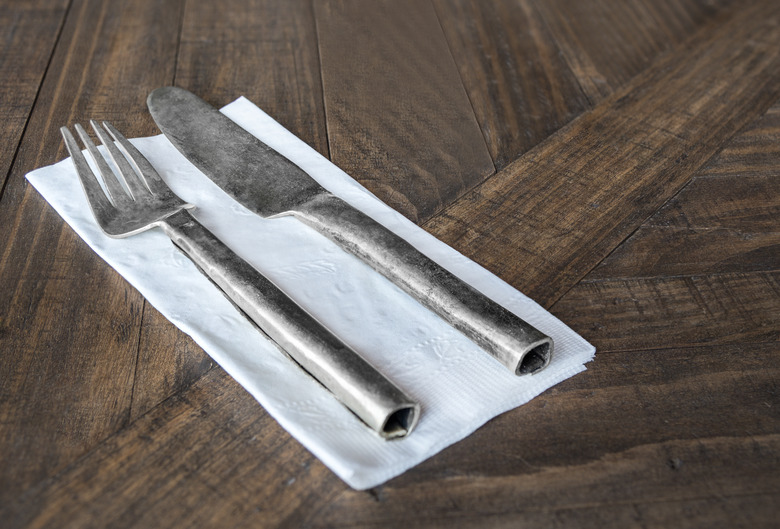Why Does Steel Feel Colder Than Wood?
Walk into a room in which you find a steel bar and a wooden stick, touch both of them, and you'll find the steel bar feels colder. At first blush, this makes no sense because both the bar and the stick are in the same room, so they must be at the same temperature. However, take into account the thermal conductivities of the two materials, and the phenomenon doesn't seem as mysterious. Steel conducts heat out of your fingers about 500 times faster than wood. By the way, if you set the bar and stick in the sun, you'll notice that the steel quickly becomes too hot to touch while the wood doesn't. The difference in their thermal conductivities is again responsible.
TL;DR (Too Long; Didn't Read)
Steel has a thermal conductivity of 50.2 W/mK while that of wood is no more than 0.12 W/mK. This is why steel feels colder than wood at the same temperature.
Fingers Interpret Loss of Heat as Coldness
Fingers Interpret Loss of Heat as Coldness
When you touch an object that is at a lower temperature than your fingers, the object feels cold because heat goes through your fingers into the object, not because coldness enters your body. The flow of energy is always from the hotter object to the colder one. This is true even for air conditioners. They don't supply cold air. Instead, they draw heat out of the air that circulates around the evaporative coils. The higher the rate of heat transfer, the colder an object feels.
Each Material Has a Characteristic Thermal Conductivity
Each Material Has a Characteristic Thermal Conductivity
The molecules in a material at a high temperature have more kinetic energy than those in a material at a low temperature, and when the materials touch, the body at the higher temperature loses energy in the form of heat. This is called thermal conductance, and the rate at which it happens is proportional to cross-sectional area and temperature difference and inversely proportional to material thickness. It's also proportional to a constant called thermal conductivity (k), which is characteristic for each material.
Scientists have measured and tabulated the thermal conductivities for most everyday materials. In the MKS measurement system, they are expressed in watts/meter-degree Kelvin (W/mK). You can also find them expressed in other units, such as Btu/(hr⋅ft2⋅F) (British Thermal Units/hour-foot-degree Fahrenheit).
Thermal conductivity is related to electrical conductivity. Most materials that conduct heat well also conduct electricity equally well, and heat insulators are also good electrical insulators. The exception is diamond, which has a higher thermal conductivity than any metal but, because of its dense lattice structure, does not conduct electricity.
Thermal Conductivities of Steel and Wood
Thermal Conductivities of Steel and Wood
The thermal conductivity of steel is 50.2 W/mK, and that for wood is between 0.12 and 0.04 W/mK, depending on the species of wood, as well as its density and moisture content. Even the most thermally conductive stick of wood transfers heat about 500 times more slowly than steel. This slow rate of heat transfer makes wood a good heat insulator, right up there with insulating brick and comparable to rock wool and fiberglass insulation.
Cite This Article
MLA
Deziel, Chris. "Why Does Steel Feel Colder Than Wood?" sciencing.com, https://www.sciencing.com/steel-feel-colder-wood-5918/. 27 April 2018.
APA
Deziel, Chris. (2018, April 27). Why Does Steel Feel Colder Than Wood?. sciencing.com. Retrieved from https://www.sciencing.com/steel-feel-colder-wood-5918/
Chicago
Deziel, Chris. Why Does Steel Feel Colder Than Wood? last modified March 24, 2022. https://www.sciencing.com/steel-feel-colder-wood-5918/
